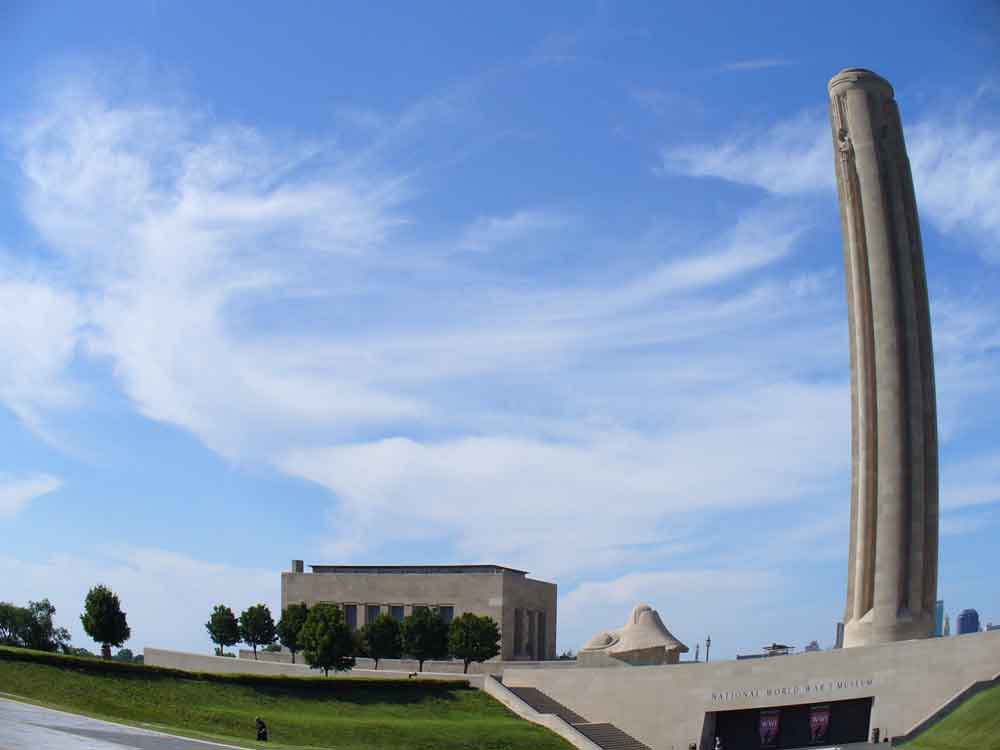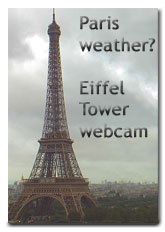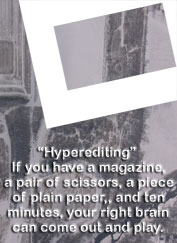Walking, early.
My bro and sil's front window reminds me of a Tiffany window.
After lunch, several of us went to the Federal Reserve Bank, and then to the World War I museum.
The Fed has a lot of coins on display. Coins in use during the terms of all the presidents, for example. (Half-penny, anyone?) There are lots of displays intended to help people understand money, both big (Federal Reserve system) and small (personal finance -- they have a hand-out on how to manage your credit card use).
Periodically, all paper money makes its way to one of the Federal Reserve banks to be inspected. Bundles of like bills (all $10s or all $20s, for example) are fed into the machine, which inspects each bill, and sends the ones that are "unfit" off to be shredded, while the ones that are OK are put back into bundles. Several (10?) bundles are bagged in a zip-lock bag, many bags (hundreds?) are put into big (plexiglas?) boxes, and the boxes are stored, to be retrieved and sent out to individual banks as needed. The warehouse is run (almost) entirely by robots. We saw the robots taking the boxes of money into the warehouse. There was a contest to name them -- they are Huey, Dewey, and Louis.......
We saw the money-inspecting (and shredding) machine. We saw someone feeding bundles of bills into the machine. We could see shadows inside a clear-but-dusty pipe where the shredded money was vaccuumed away from the machine, and we saw the nice neat bundles of OK bills leaving the machine to be bagged and packed.
A very nice and informative guard talked to us about where our money is printed, and pointed out to us that the place where it is printed is noted on the bills, and so is the first Federal Reserve bank it is sent to after being printed. Counterfeit bills may have notation about where a bill was supposedly sent after printing that wouldn't really happen (which is one sign that a bill is counterfeit).
The Kansas City Fed gives souvenirs.
I'm sure this is good for craft projects....
That's the Fed, top left. We are now standing near the top of a tower on top of the World War I museum. Looking south.
A bit east of south.
Northeast. This is Crown Center, a big hotel/convention/shopping area across the street from Hallmark (Hallmark cards, which is headquartered in KC).
North. The old train station (I think it's a children's museum now), and downtown Kansas City.
The low shiny gray thing to the right of the blue buildings (on the horizon in the center) is a basketball stadium (KC is hoping for a pro team), and the low shiny glass thing to the left of the blue buildings is a big new center for the performing arts.
All the parts of the Kansas City area I saw looked clean and spiffy. Lots of it looked shiny and new. Good job, Kansas City! (Comparing and contrasting with Detroit.....)
Northwest. Interstate 35, cutting through town.
Back on the ground, we went into the WWI museum. It has large and varied collections. Lots and lots of weapons. Uniforms. Posters. Song-sheets. There is info about what it was like "at home" as well as what it was like "over there."
I found it all very depressing. If WWI really had been "the war to end all wars," I could more easily bring myself to think of it as Noble and Worth the Sacrifice. Since we don't seem to have learned anything, and people are still fighting in numerous places around the globe, I just think it's depressing.
The museum seems to be mostly (entirely?) run by volunteers. They were eager for me to say I loved the museum, but I'm afraid I had to disappoint them. I thanked them for their time and energy, which made it possible for us see the museum, but I just couldn't say I enjoyed the experience.
And then I walked out over the plexiglass floor, over 9,000 paper poppies planted below, each one representing 1000 "combat dead"...................................
Depressing.
"Oh when will they ever learn?"
Back outside, to a beautifully-blue-but-TOO-hot day.
Ready to leave -- looking back at the tower we were standing on when I took the pics above, and the excellent sky behind it.
SOOC ("straight out of camera").
A bit of 'shopping to make the tower stand up straighter.
Just for fun, making everything more bendy.
From the WWI museum, we went to Arthur Bryant's for barbeque (for which Kansas City is famous). I had pulled pork, which was really good, and I'm told the burnt ends were really good, too. While we were there, the nice friendly knowledgeable guard from the Fed came in for his supper. He recognized us, and we spoke to him for a minute. My cousin's husband told him "we may be tourists from out of state, but we know where to eat!" He agreed we'd made a very good choice.
After supper, we decided to look for my bro and sil, who were at a local Society for Creative Anachronism meeting. After the meeting, there was fighter practice.
I suppose the technology existed to have brick roads (not that I know there were any), but I'm sure they never had signs like these, pre 1600.....
Some people in the SCA are very fussy about making sure everything is "period." Others are more concerned with being safe, and if safe armor can be built from aircraft aluminum (which is a lighter than steel), it is safer to fight in lighter armor because it's not so stressful to carry and wear. (Please note that's my take on it, not the official word.)
This armor is laced from small pieces of metal. Isn't it cool? It reminds me of Japanese samurai armor. I love the use of color.....
The white belt means this fighter is a knight in the SCA. (Notice how his orange and green and yellow all appear in the background items. This is serendipitous, but it pleases me).
I'm told fencing is relatively new, in the SCA.
Three pairs of fighters.
The weapons are usually (always?) made of rattan, which is much less harmful to the person struck than sharp metal would be, but, I was told, a ratan sword weighs about the same as a steel one of the same length.
A fighter learns to assess how badly s/he is injured, given the strength of the blow, and where s/he is hit. On their honor, fighters fall to their knees if one of their legs has taken a hit that would put it out of commission if the weapon were real. They put their arms behind their backs, similarly, and they retire from battle if they would have been killed by the sum of the blows received.
At fighter practice, there is a lot of instruction going on. After a fighter is "killed," there is often discussion about exactly what happened, and about what could have been done to fight more effectively.
It was a hot evening. Not unpleasant, in the shade, in this low-lying area, for those of us standing around watching, but for those suited up in armor, and fighting, it was hot.
We also saw examples of caligraphy and illumination (the SCA is definitely not all about fighting!).
I think it is so cool that so many interesting things are going on everywhere. People are passionate about so many different things! I'm glad we got a chance to see what some of the Kansas City SCA people were up to on the 10th!
.





































No comments:
Post a Comment